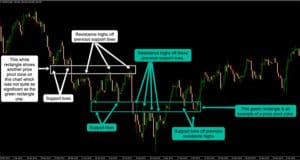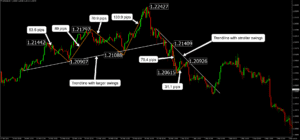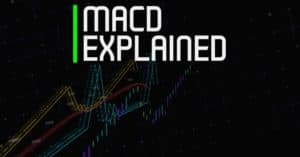We’ll look into 5 of the biggest mistakes most people make with their 401K while saving for retirement. A 401k can be a fantastic source of income over retirement, however many people need to be made aware of the significant ways they can improve their 401k results.
We’ll use the inversion technique popularised by Charlie Munger to help us gain awareness of the major mistakes to have a comfortable retirement through a 401k.
1. Not saving consistently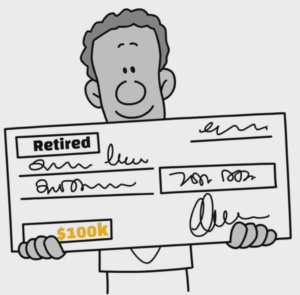
The first major mistake is not making saving a consistent habit. Most financial experts suggest around 10% of your income should be put towards retirement accounts throughout your career.
Investing around 10% of income is well within the limits for the max 401K contribution in 2023 of $22,500 or $30,000 if you’re over 50.
Of course, investing consistently into a 401K involves self-discipline to limit expenses in order to prioritize savings, which can be difficult for many of us. An excellent tip to help you develop the discipline needed to set aside money from your income is to look at the bigger picture as compound interest takes a greater effect over time.
The longer you keep saving into a retirement account, the more compound interest will take effect.
Also, you must have a financial retirement plan to avoid saving too little. The plan should consider factors such as your life expectancy, retirement age, retirement location, and your desired lifestyle. It’s important to consider updating your retirement plan every year to adjust to your requirements and lifestyle changes.
2. Being unaware of what you’re invested in
Many people are unaware of the investments in their 401k account. If it’s a self-directed IRA, you can have more investment options, therefore some may prefer this to a traditional or Roth 401k.
Be aware that a self-directed IRA can be hard to manage, and most people will likely require a financial advisor.

It’s crucial to be aware of the risks associated with a self-directed account, especially when approaching retirement as your risk tolerance will likely become lower over time. For example, you may consider allocating more of your portfolio towards bonds instead of equities the closer you get to ending your career.
Additionally, it’s worth remembering that paying for expensive mutual funds or other professionally managed funds can lead to poor long-term results compared to highly diversified low-fee ETFs or index funds. Also, you should check your 401k plan for any fees or policy terms and conditions that can affect your investment returns, as they will also compound over time.
3. Not optimizing employer’s benefits
Many companies offer employees a contribution matching the 401k you put into your 401k up to a certain amount. For example, a company may offer 50% matching for up to 6%, which results in 3% of your salary being matched.
It’s essentially like receiving free money, however you must be aware of the terms and conditions as the match could be related to a vesting period which may last many years.
Another key factor to be aware of is changing jobs before being vested. A lengthy vesting period may result in you changing your job before you’re vested, and therefore not being able to gain from your employer’s matching contributions.
4. Being unaware of different 401k accounts
Many employees need to be aware of the various 401k accounts available, such as a traditional 401k or Roth 401k. The main difference between these accounts is that the traditional 401k makes you pay tax when withdrawing money in retirement rather than when you initially make the contributions.
The tax from a traditional 401k contribution comes from your gross income before income tax has been deducted. Also, it’s worth noting that no tax is paid on investment earnings until you withdraw.
However, Roth 401k contributions are taxed during the time of contributions, but you can take out money in retirement tax-free. If you feel like you’re going to pay more tax when you’re older, you may decide to put more money into a Roth 401k instead of a traditional 401k. Sometimes, an employer will offer both types of 401k plans, allowing employees to divide part of their funds into each.
5. Cashing out early
Withdrawing money early is often not a good idea unless you require the money for an emergency. You will take on income tax and a withdrawal fee which is usually 10% unsless you’re over 59 and half years old. Also, it’s essential to be aware of withholding fees your employer may make you pay on your account if you hold less than $ 5,000 when changing jobs.
The United States Congress made a 401k to help Americans save up for retirement. With significant benefits including tax savings and employer matching contributions, it’s important to consider investing in a 401k.
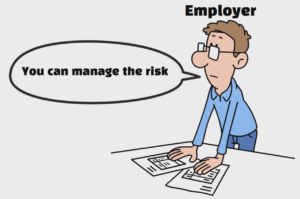
Employers are increasingly keen on giving the risk and responsibility to employees to manage their retirement accounts. A traditional pension would be where an employer pays an employee during their retirement; however more recently 401k plans have become more popular. The 401k option also allows employees to choose investments such as stocks, bonds, company stock, mutual funds, etc.
We have all likely made at least one of the mistakes mentioned earlier. It’s OK if you have made one of these mistakes if you learn from it and continue trying to save more for your retirement.
If you enjoyed reading this make sure you check out more content from the blog.




